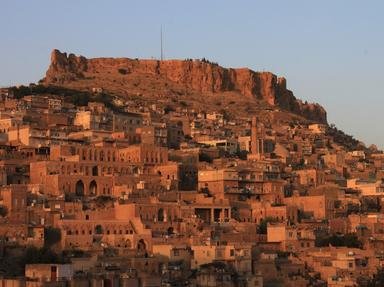Quiz Answer Key and Fun Facts
1. In the introduction to his law code, Lipit-Ishtar described himself as "the humble shepherd of Nippur" who was chosen by the gods to become king of the city-state of Isin. Which other historical figure, who received divine blessing to rise from his status as a shepherd to become a king, does Lipit-Ishtar's experience bring to mind?
2. Lipit-Ishtar also described himself as "the stalwart farmer of Ur." As a shepherd of Nippur and farmer of Ur, in which modern state would we expect the discovery of his writings and law code to have taken place, as it did in 1899?
3. Lipit-Ishtar not only ruled Isin, but also developed a law code for it. In fact, his code appeared about 100 years before that of the king whom I had always taught in my history classes as having created the world's first law code. Which king was that?
4. Lipit-Ishtar's name appears, along with dozens of other rulers, on a Bronze Age document identifying kings of several other cities that existed concurrently with Isin. Besides the Dynasty of Isin, it also includes five dynasties of Uruk, three dynasties of Ur, and four dynasties of Kish. Sources containing all or parts of this document include the "Babyloniaca" of a Babylonian writer and priest of Marduk, the "Dynastic Chronicle," and the "Kish tablet." What is the name of this document?
5. Alright, I must admit that I don't know if Lipit actually does rhyme with Whip It!, since I do not speak ancient Mesopotamian languages. However, if I were to see any laws, decrees, or records of Lipit-Ishtar's reign, I would recognize the writing, as well as that of his contemporary city-states such as Kish, Ur, Larsa, Uruk and Nippur. Which type of writing characters would those records use?
6. Unlike the better known Mesopotamian kings like Sargon, Hammurabi, and Nebuchadnezzar, Lipit-Ishtar and several other kings of Isin and other cities of the region have hypenated names. In researching these rulers, I've found a common pattern in the second half of their names with such rulers of Ur-Nungal of Uruk, Puzur-Nirah of Akshak, and other Isin kings such as Ishme-Dagan and Ur-Ninurta. To what do such names as Ishtar, Nungal, Nirah, Dagan, and Ninurta refer?
7. Which of the following writing surfaces would Lipit-Ishtar's scribes have used to record his law code?
8. The world history texts I used to teach with usually described Mesopotamia's earliest law code as being harsh, along the lines of "an eye for an eye." But Lipit-Ishtar's code seemed more modern. For example two laws laid out the punishment if a farmer rented an ox and either "broke its horn" in one case (Law 8), or "damaged its tail" in the other (Law 9). Both "crimes" called for the same punishment. What was it?
9. Another law in Lipit-Ishtar's code stipulates that if a man's wife has not given him children, and he therefore gains children through "a harlot from the public square," those children shall be his heirs. Furthermore, he is also required to "provide grain, oil, and clothing for that harlot." (Law 27 translated by Francis Steele) A note from one of my sources of this code says this is the world's first instance of what type of law and public policy?
10. Lipit-Ishtar's prologue to his law code lists his accomplishments with such phrases as "Establish Justice in the Land," "Turn Back Enmity and Rebellion By the Force of Arms," "Bring Well-being to the Sumerians and Akkadians," and "procured Liberty of the Sons and Daughters of Sumer and Akkad." In 1994 James T. McGuire quoted these phrases in his argument that Lipit-Ishtar's prologue closely resembled what American document?
Source: Author
shvdotr
This quiz was reviewed by FunTrivia editor
bloomsby before going online.
Any errors found in FunTrivia content are routinely corrected through our feedback system.

